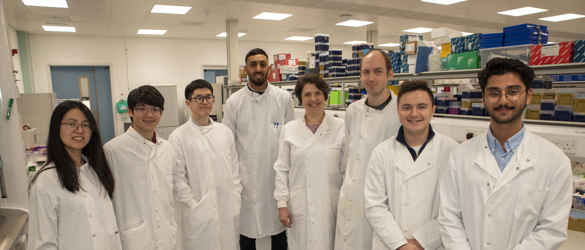Stopping the build-up of toxic waste in dry AMD
Posted: Monday 24 June 2024
In patients with dry age-related macular degeneration (AMD) there’s a noticeable build-up of toxic waste, known as lipofuscin, within the cells of the retina.
What are lysosomes?
Lysosomes, which are part of the cells’ waste removal system, break down and remove lipofuscin in healthy retinal cells. But with dry AMD, the lysosomes aren’t able to remove this toxic waste, which then accumulates within the retinal cells, contributing to the early death of those cells.
Dr Arjuna Ratnayaka, from the University of Southampton, aims to understand what causes the build-up of lipofuscin and find ways to activate the lysosome waste removal system in the retina. The goal is to develop treatments that will aid the breakdown and removal of lipofuscin, ultimately saving sight by restoring the health and longevity of retinal cells.
Waste removal on strike
Dr Ratnayaka said: “The closest analogy I can think of is if you imagine the local council recycling people going on strike – if there’s no waste removal, it will start to build up. This is effectively what happens inside the retinal cells: a vast amount of unwanted material builds up, slowly killing them.
“We’re looking at a way to boost the survival of these cells by getting them to generate or produce new, healthy lysosomes. These will take the place of the lysosomes that no longer exist, or are too filled with junk and rubbish for them to do their job.”
Potential target for treatment
The accumulation of lipofuscin serves as an early indicator of dry AMD, making it a potential target for treatments which could slow down or even prevent the progression of macular disease. This project could pave the way for early-stage interventions before significant vision loss occurs.
Importance of funding research
Dr Ratnayaka added: “Vision research is very expensive, but by donating you’re moving new research forward. You will see a return on your investment in the form of new projects which have the potential to directly benefit patients with macular disease. Thank you so much.”
You can Beat Macular Disease by funding sight-saving projects like Dr Ratnayaka’s
If you can, please donate today.
Explore our other research
Since 1987 the Macular Society has invested around £10 million in over 100 research projects.



